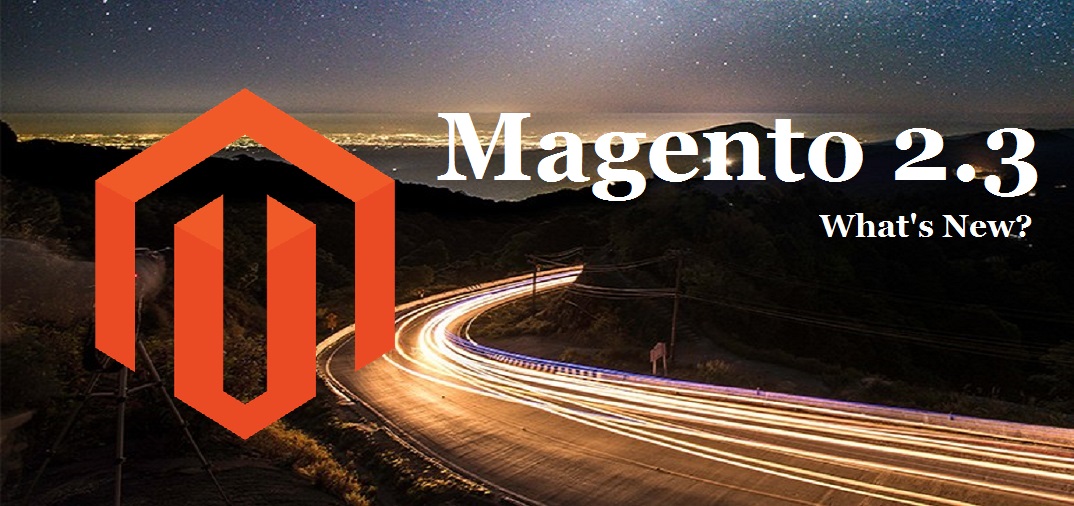As discussed in the previous blog, Magento 2.3 has proven to be one of the key highlights for the Magento community. With a pool of exciting features and add-ons, it is doing wonders in the development field.
Earlier, we had a detailed explanation of some features including:
- Two-Factor Authentication
- Google reCAPTCHA
- Cache Management ACL
- PHP 7.2 Support
- Libsodium
It’s time to take into the consideration the remaining ones while making Magento 2.3 even more fascinating and clear.
Progressive Web App (PWA) Studio
With nearly three-quarters of consumers engaging in mobile shopping this year, it is the need of the hour to bring out something unique; and thus PWA comes into the picture.
Built to take advantage of modern technology features that “progressively” scales back on devices where those features are not available, a PWA allows for the caching of data so the website can be used (partially or fully) in an offline mode. Its enabling merchants in delivering superior mobile experiences that boost conversion rates and increase engagement.
Recognizing the multiple benefits to this, Magneto, in late 2017 announced its efforts in building what it calls the PWA Studio. It contains tools to develop and deploy a PWA for Magento’s front end a lightweight (not feature-full) demo site. The immediate benefits are a major increase in front-end performance and a close to 10X increase in speed of onboarding new Magento front-end developers.
Furthermore, it is proven to improve SEO, drive 50% higher conversion rates and 50% better page performance. Designed using reference themes, guided development, and open web standards, PWA Studio also speeds time to market and lowers the total cost of ownership.
GraphQL Support
Meant for using APIs, GraphQL is a query language. With the rise of the PWA, there is a need to get smaller amounts of data and fewer API requests. By allowing the requestor to request a limited subset of attributes to be returned about an entity (significantly smaller responses) and chaining requests (smaller number of requests), GraphQL’s query language makes this a cakewalk.
Magento currently supports REST and SOAP API requests that use Service Contracts. However, in order to support GraphQL, Magento is writing an entirely new layer that is ought to interface directly to the Query API. Moreover, the GraphQL implementation will be the underpinnings on how a PWA frontend will retrieve the needful data.
Declarative DB Schema
This new approach allows developers in defining database structures and making changes in XML files, instead of defining with install scripts.
The new DB schema provides a huge advantage named rollback support. Meaning you can roll back database changes you implement on a module or functionality to the previous version. It also streamlines the Magento installation and upgrade processes.
Today, when you want to alter the schema of a Magento database, the pattern used to accomplish this is to use the InstallSchema and UpgradeSchema classes where code is written to alter the schema. Magento 2.3 is ought to change the recommended way by implementing a declarative database schema. Instead of the DB schema definitions being fragmented throughout many installs and upgrade scripts, it will be fully defined via XML.
Asynchronous and Bulk Web API
An essential community contribution, Asynchronous and Bulk Web API enables to process a large number of API requests asynchronously without waiting for the response from the server.
In the traditional API approach, Magento takes a while to process the response and the client has to wait for a response; and the more the number of changes and products are, the longer it takes.
In contrary, the asynchronous API in Magento 2.3 works over message queue that allows to execute Web API asynchronously and complete tasks in the background. It also gives you the ability to make batch processing easily, which otherwise, is a huge advantage for big sites with daily bulk API requests i.e. inventory import, order status updated from ERP system etc.
Multi-Source Inventory (MSI)
As merchants grow and adapt, so do the ways they sell, store and deliver the products. Multi-Source Inventory (MSI) helps merchants in improving operational efficiency simply by managing inventory across multiple physical locations from the Magento admin. Additionally, it allows merchants to:
- Assign products and quantities to each fulfillment source, such as warehouses, stores, distribution centers or third-party drop shippers.
- Track inventory at each source for easier management of inventory.
- Streamline operations with rules to prioritize and automatically control the inventory sources that are used to fulfill orders for each website in real- time.
- Integrate with third-party inventory systems
Fortunately, even merchants with a single inventory source can benefit from MSI with an inventory reservation system that tracks deductions from the salable product stock when customers add products to carts. This, in turn, results in accurate quantity counts and high performing checkouts with enhanced conversion rates.
WYSIWYG Upgrade
The WYSIWYG editor — TinyMCE — is upgraded from version 3 to version 4 in Magento 2.3. It has brought new enhancements for a highly customizable WYSIWYG: widgets, variables and media gallery are implemented as plugins and can be defined globally or on per shop instance.
Page Builder
Gone are the days of creating pages and managing site content using HTML and CSS. Available for Magento Commerce, Page Builder introduces an intuitive, drag-and-drop interface; a powerful set of content types like images, videos, and banners; and instant preview capabilities that enable non-technical users to take control of their content. It allows you to create new pages, enrich products and categories, and launch content updates quickly and easily without the help of a front-end web developer. A flexible grid system allows you to position page elements in a highly customizable way and in-context text editing streamlines the whole process. Moreover, the appearance and behavior of content types can also be quickly tuned to accommodate any design.
Fully functional in Magento 2.3, it features a media gallery and widgets so that these assets can easily be integrated within your pages.
Magento 2.3 has really got some weight! With eye-popping and mind-boggling features, it is certain to make great changes and leave an ever-lasting impact on the users, developers as well as the consumers.






